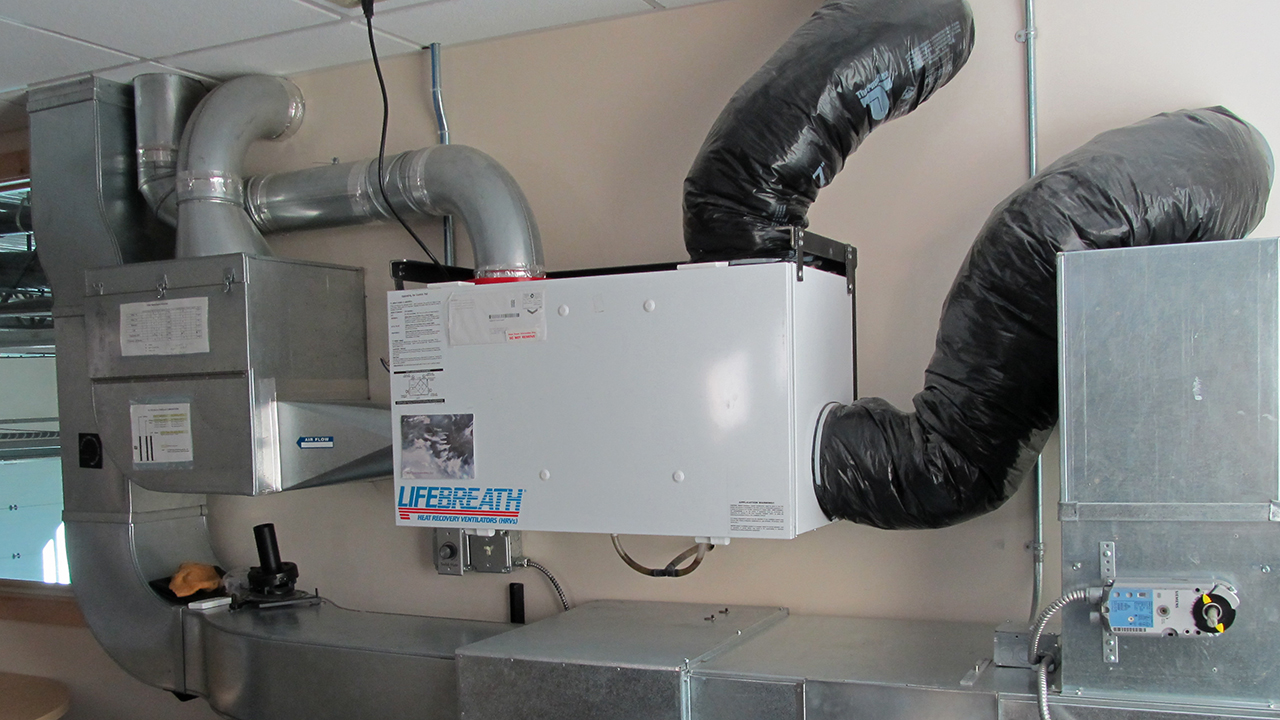A Simple Guide to HRV Filter Cleaning
How Heat Recovery Ventilation Enhances Indoor Air High Quality and Reduces Power Costs
Heat Recovery Ventilation (HRV) systems play a necessary role in enhancing interior air top quality while concurrently reducing power expenditures. By efficiently exchanging stale interior air with fresh outside air, HRVs help maintain suitable moisture and reduce pollutants. Additionally, their capacity to recover heat from outward bound air reduces the pressure on heating and cooling down systems. As power prices remain to rise, understanding the complete potential of HRV systems ends up being significantly essential for home owners and businesses alike.
Recognizing Heat Recovery Ventilation Systems

Heat recovery ventilation (HRV) systems play an essential duty in boosting interior air quality, specifically in contemporary, energy-efficient structures. These systems are made to move warm from the outbound stale air to the inbound fresh air, consequently minimizing power loss while keeping suitable temperature level levels inside your home. HRVs include a heat exchanger, fans, and ductwork, helping with the continuous blood circulation of air. By eliminating indoor contaminants and introducing fresh air, HRVs help to balance humidity levels, prevent mold growth, and lower allergens. The effectiveness of HRV systems hinges on their ability to recoup up to 80% of the warm from the tired air, promoting power conservation while guaranteeing a healthy indoor setting. Their combination is crucial in attaining lasting living techniques.
The Importance of Indoor Air Top Quality
Indoor air quality (IAQ) is a critical element affecting the wellness and wellness of occupants in any kind of environment. Poor IAQ can cause various health and wellness issues, including respiratory system troubles, allergies, and tiredness. Additionally, it can aggravate status quo such as bronchial asthma. Elements adding to reduced IAQ consist of contaminants from indoor resources like cleaning up representatives, mold and mildew, and inadequate air flow. Subsequently, preserving good IAQ is important for advertising a secure and comfortable living or working area. Effective approaches to enhance IAQ entail normal monitoring of air top quality, proper ventilation systems, and decreasing using unsafe substances inside. By focusing on IAQ, individuals can assure a much healthier setting that promotes productivity and general lifestyle.
Energy Performance Advantages of HRV Solutions
Numerous property owners and building supervisors are increasingly identifying the energy effectiveness advantages of warmth healing air flow (HRV) systems. By transferring heat from worn down indoor air to inbound fresh air, HRV systems significantly lower the power required for heating & cooling. This procedure reduces reliance on standard HVAC systems, causing reduced energy costs. Furthermore, HRVs assist keep a balanced indoor climate, stopping extreme home heating or cooling needs. The capacity to recover up to 90% of the heat from outgoing air likewise supports sustainability efforts by minimizing general energy usage. As a result, HRV systems add not only to set you back savings however also to a lowered carbon impact, lining up with the expanding focus on energy-efficient structure techniques.
Installation and Upkeep Considerations
The reliable application of warmth healing air flow (HRV) systems requires cautious consideration of installation and maintenance factors to guarantee peak performance. Appropriate positioning of the HRV device is essential, as it ought to be mounted in an area that makes the most of air movement while reducing sound disturbance. Additionally, ductwork site web should be properly sized and shielded to stop power loss. Routine maintenance, consisting of filter replacement and system cleaning, is crucial to safeguard optimum performance and interior air quality. Proprietors must develop a regular upkeep timetable to recognize and deal with possible issues prior to they rise. Cooperation with skilled professionals throughout both setup and maintenance phases can enhance the longevity and efficiency of HRV systems, eventually leading to much better indoor settings and lowered energy prices.
Real-World Applications and Success Stories
Exploring real-world applications of heat recuperation ventilation (HRV) systems discloses their substantial influence on indoor air top quality and power effectiveness throughout different setups. In household structures, house owners have reported enhanced air top quality, causing fewer allergies and respiratory system problems. Schools implementing HRV systems have actually noted improved pupil focus and minimized absenteeism because of much better ventilation. Commercial buildings, such as offices and retail rooms, have actually experienced reduced energy prices and look here raised worker efficiency. For circumstances, a corporate office in a pleasant climate attained a 30% decrease in energy costs after setting up an HRV system. These success stories show that HRV modern technology not only contributes to much healthier settings however likewise offers concrete monetary benefits, making it a valuable investment for different fields.
Often Asked Concerns
Can HRV Systems Minimize Irritants in Indoor Air?
The efficiency of HRV systems in lowering interior irritants mainly hinges on their capacity to filter and exchange air. HRV Heat Recovery Ventilation. By continuously replacing stagnant air, these systems can significantly reduce allergen levels throughout interior environments

How Does Humidity Affect HRV System Efficiency?
Humidity significantly affects HRV system performance; high degrees can cause condensation, lowering effectiveness, while reduced moisture may enhance air exchange. Stabilizing humidity is crucial for excellent procedure and keeping interior air high quality.
Are HRV Systems Noisy During Procedure?
HRV systems can create differing noise degrees during procedure, depending upon their layout and installation. Some units run silently, while others might generate obvious sound, especially at higher air movement setups or when badly kept.
What Is the Ordinary Lifespan of an HRV System?

Can HRV Systems Be Made Use Of in All Environments?
HRV systems can be used in various environments, yet their performance might differ - HRV Heat Recovery Ventilation. In extreme temperatures, changes or extra systems look at more info could be necessary to assure excellent performance and convenience while keeping indoor air quality